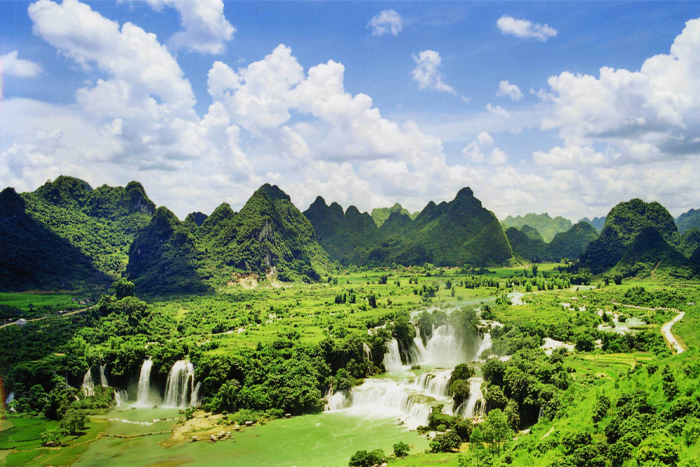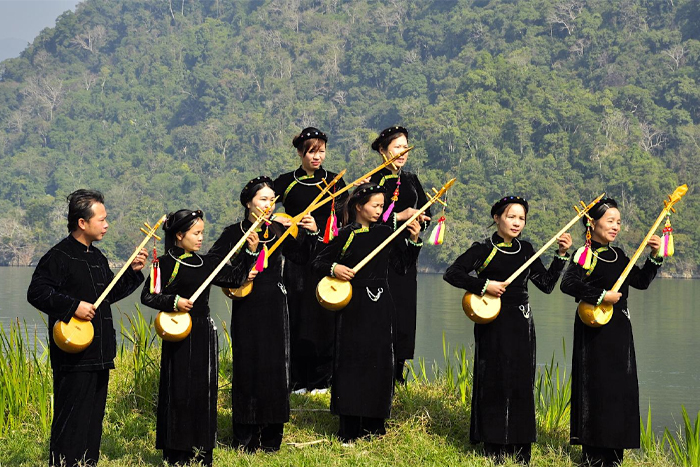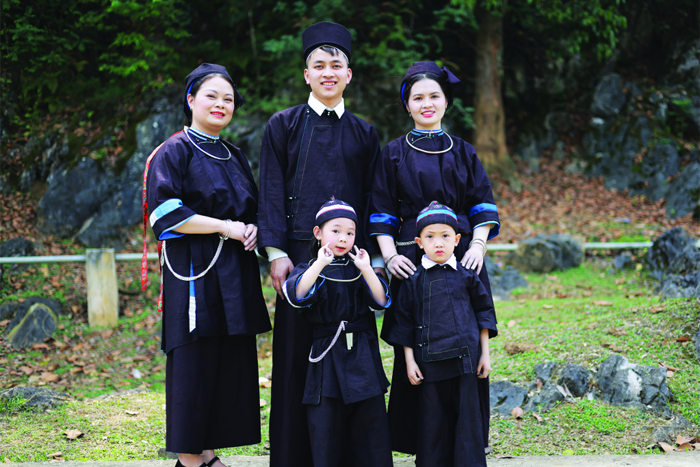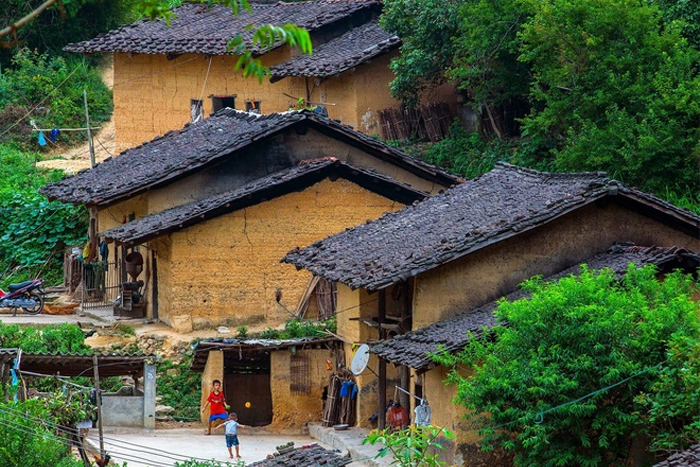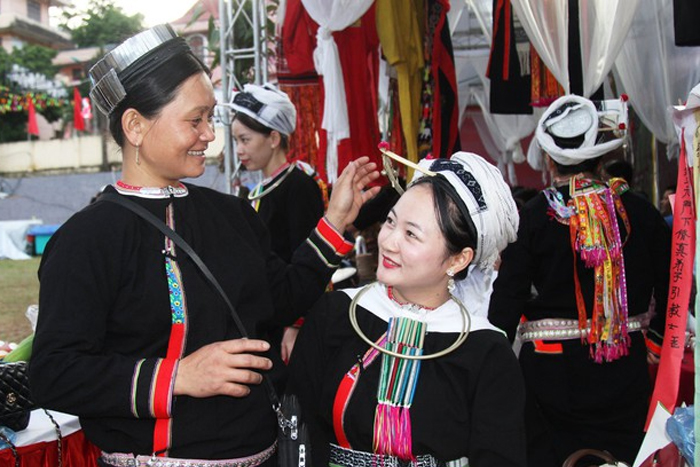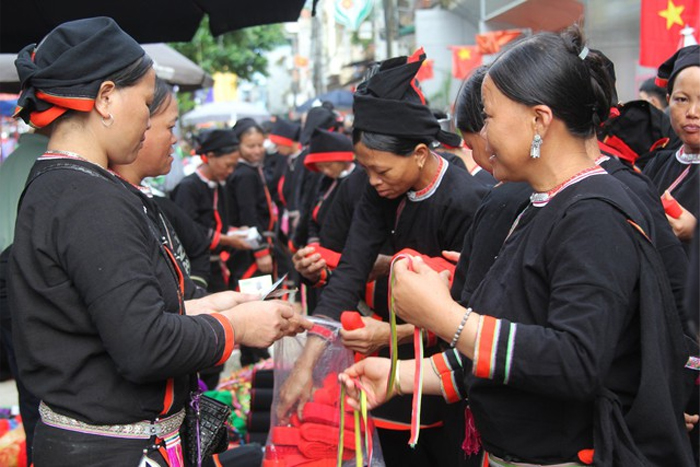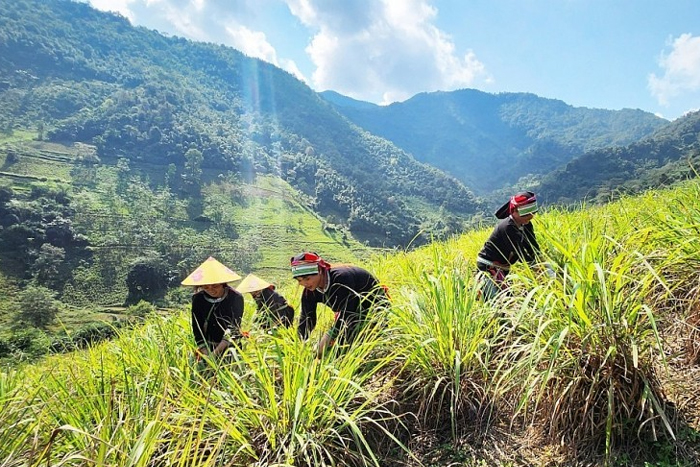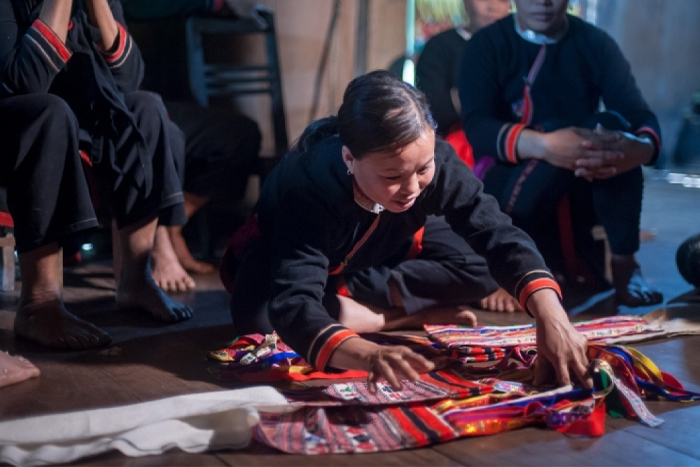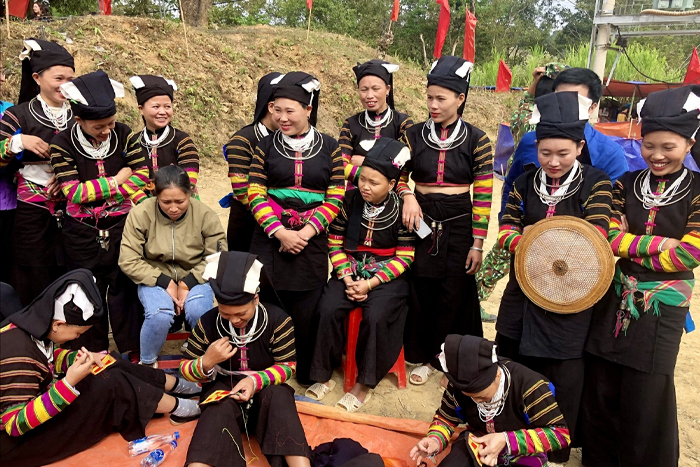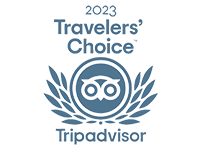
Cao Bang, a picturesque province located in northeastern Vietnam, is a true treasure of cultural and ethnic diversity. Bordered by China to the north and surrounded by majestic mountains, dense forests, and winding rivers, this region is rich not only in natural beauty but also in cultural heritage. Cao Bang is often described as a crossroads of cultures, where various minority ethnic groups have coexisted harmoniously for centuries, each contributing its unique touch to the cultural mosaic of the province. By visiting this region, you will be immersed in the charm of picturesque villages and bustling markets, where the Tay, Nung, H'Mong, Dao, and other ethnic groups will warmly welcome you. Each interaction and discovery will plunge you into a dazzling world of vibrant colors, exquisite flavors, and unforgettable traditions. Discover the ethnic minorities in Cao Bang Vietnam with Autour Asia in this article.
I. Overview of ethnic minorities in Cao Bang, Vietnam
Less known than Sa Pa and Ha Giang, Cao Bang Vietnam is an exceptional region offering breathtaking and still-preserved landscapes, ideal for adventurers seeking authentic discoveries. Located more than 300 km from Hanoi, this mountainous province in the far northeast of Vietnam is characterized by limestone mountains covered in dense vegetation, terraced rice fields, impressive waterfalls, and winding roads. Cao Bang also offers unique encounters with numerous ethnic groups living in remote valleys and on mountain slopes, far from the hustle and bustle of modern life. This mountainous region is home to many minority ethnic groups, each with its own traditions, languages, and ways of life.

Vietnam, known for its rich tapestry of peoples and traditions, is home to 54 distinct ethnic groups. Cao Bang, in particular, is a microcosm of this diversity, with a high concentration of ethnic minorities who keep ancestral customs and ways of life alive. These communities, often located in remote and mountainous areas, have managed to preserve their cultural heritage despite the influences of modernity and socio-economic challenges.
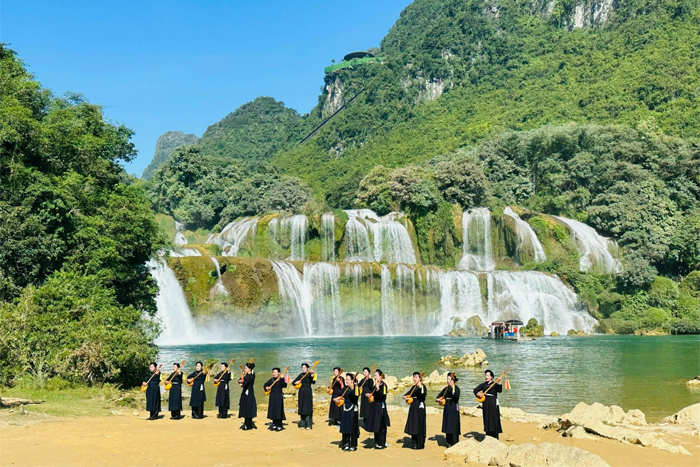
The cultural richness of Cao Bang, shaped by centuries of coexistence and ethnic diversity, is a living testament to the complexity and beauty of Vietnamese identity. The ethnic minorities in Cao Bang, such as the Tay, Nung, Hmong, Dao, San Chay, and Lolo, are known for their agricultural practices, artisanal techniques, and colorful festivals. Each of these communities has its own language, religious beliefs, and unique traditions, contributing to a rich cultural diversity. Visitors to Cao Bang have the opportunity to explore these cultures through direct interactions with the inhabitants, participation in traditional festivals, and the discovery of local crafts.
II. The beauty of ethnic minorities in Cao Bang

Discovering the beauty of ethnic minorities in Cao Bang offers tourists numerous advantages, enriching their travel experience in profound and unique ways. Visitors can immerse themselves in diverse cultures by participating in local traditions and festivals, enhancing their understanding of the lifestyles and values of ethnic communities. Staying in traditional homes or participating in craft workshops allows tourists to live like the locals and learn directly from them. The ethnic villages, set in stunning natural landscapes, offer a serene and calming travel experience. Exploring local culinary specialties enriches the gastronomic experience of tourists. Interacting with minorities helps appreciate cultural diversity and raises awareness about the importance of preserving traditions. Ethnic tourism supports the local economy, aiding in the preservation of traditions and improving the quality of life for communities. The picturesque landscapes and colorful costumes provide excellent photography opportunities.
1. The Tay
The Tay ethnic group is one of the main minority groups in the low mountainous regions of northern Vietnam. With approximately 1.5 million people, they are the second-largest ethnic group after the Viets. The Tay have their own distinct customs, language, and way of life, reflecting their rich cultural heritage. The Tay in Cao Bang are the largest minority ethnic group. They primarily reside in valleys and plains where they practice agriculture, especially terrace rice farming. The Tay are known for their traditional stilt houses and vibrant cultural festivals, such as the Long Tong festival (field festival), which marks the beginning of a new agricultural season.

Regarding Tay clothing, women typically wear a skirt or trousers paired with a shirt and overlaid with a tunic. Men’s traditional attire is often indigo-dyed, similar to that worn by neighboring ethnicities. Tay clothing is generally devoid of ornamental patterns, with the notable exception of the Pa Dí subgroup. Pa Dí women prefer garments with sleeves decorated with colored fabric panels and often wear house-shaped hats.
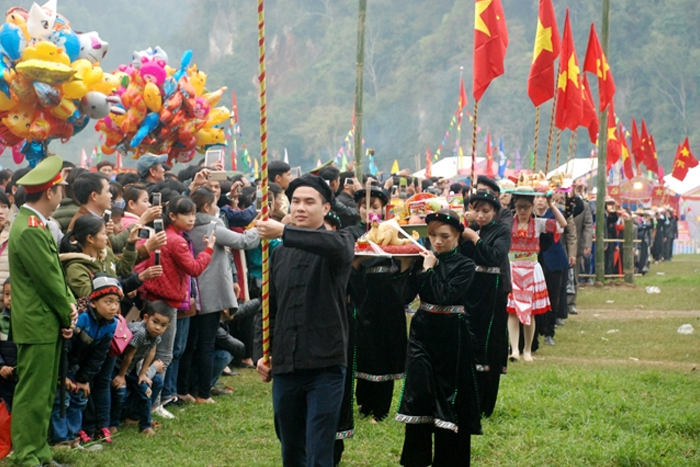
Tay culture is deeply influenced by that of the Viet due to long-standing coexistence. In terms of religious practices, the Tay in Cao Bang share a significant veneration for ancestors with the Viet. They also honor the Earth God, the Hearth God, and the Goddess of Birth. Several traditional events hold special significance, with the Lunar New Year (Tết Nguyên Đán) and the Mid-July Festival (dedicated to the worship of the souls of the deceased) being particularly prominent. Depending on the region, the Tay organize various ceremonies such as field festivals, moon festivals, mountain labor rituals, and egg-laying celebrations, aimed at thanking and imploring deities for health, happiness, prosperity, and luck.
2. The Nung
The Nung in Cao Bang, the second largest ethnic group in the province, primarily inhabit mountainous areas. Their culture and traditions are similar to those of the Tay, but they also have distinctive practices of their own. The Nung are renowned for their craftsmanship, particularly in making clothing and bamboo items.
Generally, the Nung in Cao Bang, especially the women, dress similarly, although slight variations can be observed depending on the locality. Men wear an indigo-dyed jacket with a mandarin collar and buttons down the front, similar to those worn by neighboring ethnic groups in the northern mountainous region of Vietnam. Only the Nung An have adopted a five-panel jacket, buttoned on the side, which is slightly shorter than that of the Tay.
Nung's houses in Cao Bang vary according to the group and region: they can be built on the ground or partially on stilts, with rammed earth walls and tiled roofs. Traditionally, men occupied the elevated floor, while livestock and agricultural products were stored underneath. Nowadays, houses are more spacious and well-ventilated, with the space under the floor used for tools, while stables are built at a distance. The house is divided into two parts: the front for the ancestor altar and receiving visitors, and the back for the bedroom and kitchen.
3. The Hmong
The Hmong people live in the highest regions of Cao Bang Vietnam. They are easily recognizable by their colorful and intricately embroidered traditional costumes. The Hmong practice slash-and-burn agriculture and primarily cultivate corn. They celebrate numerous festivals, including the Hmong New Year, marked by dances, music, and traditional games.

The traditional costume for women consists of a wide skirt matched with a front-open bodice. White Hmong women prefer skirts made of cream-colored fabric, while Flowery, Green, or Black Hmong prefer indigo. They typically walk barefoot and wear leggings. As for men, they wear loose pants tied at the waist, paired with a short jacket with wide sleeves. Their hairstyle is distinctive, with hair falling over the shoulders or shaved on the sides, leaving a tuft on the top of the head, often covered with a large turban. White Hmong shave around the head while keeping a tuft on top, while Flowery Hmong wrap their hair. Young Green Hmong prefer to let their hair fall freely over their shoulders.
4. The San Chi
The San Chay, also known as Cao Lan or Sán Chỉ, primarily reside in valleys. This ethnic group belongs to the Tay-Thai linguistic family, with origins tracing back to Guangdong province in southern China. Over four hundred years ago, they migrated to northern Vietnam. Their culture is rich in musical traditions and folk dances. The San Chay are also farmers and live in harmony with the Tay and Nung.
Although the traditional costume of San Chi women is less extravagant than that of other minority ethnic groups, its simplicity, adorned with a discreet touch of color at the waist and a few silver ornaments, gives it a certain elegance.
The San Chi in Cao Bang, renowned for their agricultural skills, are adept cultivators practicing not only wet rice farming but also fruit cultivation, especially lychees, as well as harvesting medicinal plants such as noni, a valuable herb with various therapeutic properties. In addition to agriculture, animal husbandry and crafts such as woodworking, basketry, and blacksmithing also contribute to their income.
In addition to their agricultural talents, the San Chi in Cao Bang are also renowned for their musical passion. Their lives are imbued with a rich, varied, and vibrant musical heritage. These folk tunes come to life during the "Câu mua," an iconic ceremony of the San Chi ethnic group aimed at ensuring the prosperity of the village and good harvests. This ancestral music is used by the San Chi to express gratitude to their ancestors. The "Câu mua" is considered a national cultural treasure, listed among the ten traditional ceremonies of the country to be preserved at all costs.
5. The Dao
The Dao, or Yao, are known for their traditional costumes adorned with red embroideries and their ancestor worship ceremonies. They live in mountainous areas and practice subsistence agriculture. The Dao have a rich tradition of traditional medicine and numerous spiritual rituals.
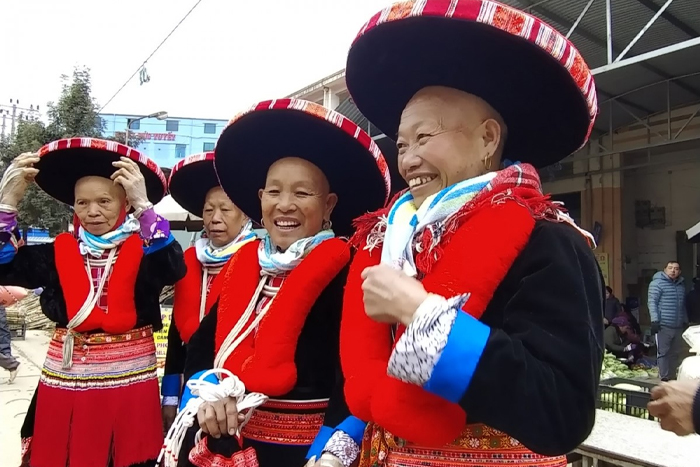
Dao people typically wear a short jacket in their daily life, but for special events, they opt for a tunic that reaches down to the knees. Hair is styled in a bun at the back or shaved on the sides, with a tuft on top. Women prefer trousers and a front-slit tunic, while men often wear cotton trousers dyed indigo, tied with a wide belt. Silver or bronze jewelry is also common among the Dao. In their spiritual life, the Dao are influenced by three religions, primarily Taoism. This influence is manifested through seasonal celebrations and prayers aimed at seeking protection against various events such as illnesses, childbirth, funerals, and natural disasters. Additionally, the Dao observe ancestor worship, whether in their own homes or in the lineage chief's residence.
6. The Lo Lo
The Lo Lo are one of the smallest ethnic groups and live in remote mountainous regions of Cao Bang. They are distinguished by their unique traditional costumes and specific customs. Despite external influences, the Lo Lo in Cao Bang have preserved their cultural traditions.
The Lo Lo live in hamlets, their stilt houses are erected in elevated and dry locations, overlooking the valleys. Their villages, larger than those of other minority ethnic groups, consist of magnificent wooden houses, forming real living museums to discover. The houses of the Black Lo Lo in Cao Bang follow a similar pattern: the ground level is dedicated to livestock and storage of agricultural tools. The single floor is reserved for daily life, divided into three sections: the central part houses the household spirits altar, backed against the rear wall, while the kitchen is near the entrance. The other two sections serve as bedrooms.

The Lo Lo in Cao Bang maintain traditional clothing, especially among women. Black Lo Lo women wear a black tunic that they pull over like a sweater, accompanied by a long and wide skirt, fitted at the waist and knees. In contrast, variegated Lo Lo women sport a jacket adorned with triangles of various colors of fabric and indigo trousers. Each Lo Lo family lineage is divided into several branches, whose members often live in the same hamlet, being closely related to each other. The function of branch chief, usually assumed by a man, is crucial, ensuring ancestor worship, solidarity, and the custody of sacred drums, used for communication between the living and the dead.
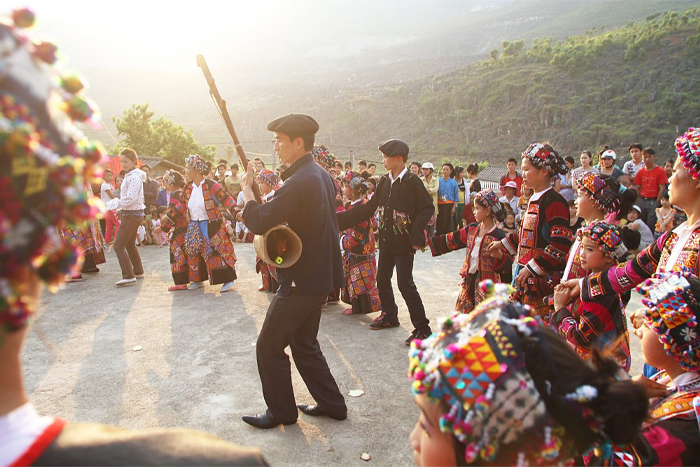
The Lo Lo have a strong belief in spirits and genies. When a person dies, their family organizes a "spirit dance" for three days to guide their soul to their ancestors, with many animals sacrificed and ceremonies marked by the sound of drums. Although they often prefer to live on the fringes of society and fiercely protect their traditions, the Lo Lo are distinguished by their incredible hospitality. Their eyes, of deep and beautiful black, seem to reflect the purity of their soul, in harmony with the peaceful forest environment surrounding them.
III. Some useful travel tips
Embarking on a journey to explore the ethnic minorities in Cao Bang Vietnam, is an enriching and enlightening experience. Amidst the picturesque landscapes and vibrant cultures, travelers are offered a unique opportunity to delve into the traditions and lifestyles of these diverse communities. However, navigating through unfamiliar territories requires careful consideration and respect for local customs. Therefore, here are some useful travel tips to ensure a memorable and respectful exploration of the ethnic minorities in Cao Bang.
Respect the local culture: Show respect for the customs and traditions of the ethnic communities you visit. Avoid taking photos without permission and follow the guidance of the locals.
Be aware of the impact of your visit: Preserve the natural and cultural environment by minimizing your ecological footprint and supporting sustainable practices. Purchase local products and respect protected areas.
Be open and engaging: Interact with local residents in a respectful and engaging manner. Learn a few words of the local language and show interest in their way of life and traditions.
Prepare for local conditions: The mountainous regions of Cao Bang can have changing weather. Bring clothing suitable for temperature variations, comfortable hiking shoes, and rain protection items.
Be mindful of cultural restrictions: Some ethnic communities may have specific practices or rules to follow. Research in advance to avoid cultural missteps.
Be prepared in advance: Familiarize yourself with local regulations, travel conditions, and plan a flexible itinerary to adapt to unforeseen circumstances.
Stay with local families: Consider staying in homestays or guesthouses run by local families to immerse yourself in the culture and support the community directly. This can also provide you with authentic experiences and insights into daily life.
By following these tips, you can fully enjoy your experience of discovering the ethnic minorities in Cao Bang while respecting local communities and their environment.
In essence, Cao Bang is a province that invites discovery and exploration. Immersing oneself in the cultural and human richness of the ethnic minorities in Cao Bang, Vietnam, is a captivating and enriching experience. From age-old traditions to lifestyles rooted in nature, every encounter with these communities offers a unique glimpse into the diversity and beauty of Vietnam. Whether through their traditional attire, spiritual practices, or warm hospitality, every aspect of their lives sheds valuable light on the history and identity of this region. By discovering these ethnic minorities, we not only embrace their culture but also their soul, thus forging lasting bonds with the multicultural fabric that enriches Vietnam.
We hope the information about the
ethnic minorities in
Cao Bang,Vietnam is helpful and assists you in having an enjoyable and authentic experience in
Cao Bang,
Vietnam. We believe you will have a wonderful journey and many memorable experiences. For a satisfying experience that exceeds your expectations, please CONTACT ATOUR ASIA,
Vietnam Travel Agency now.

